Stress Research
Saliva-based Cortisol Measurement
Today, the most commonly used sample in cortisol-based stress research is saliva. The Salimetrics® Cortisol Enzyme Immunoassay Kit is a competitive immunoassay specifically designed and validated for the quantitative measurement of salivary cortisol.
Research shows a clear link between stress and its effects on health. Whether this stress is acute or chronic, it can affect cortisol levels produced by the human body, which are measurable using a variety of sampling systems and sample types. Saliva, as the most commonly used sample, has been used extensively in cortisol-based stress research to determine levels of "free" steroid and sex hormones, and the correlation of these hormones with circulating levels in serum is well established in the literature.
 The Salimetrics® Cortisol Enzyme Immunoassay Kit (Art-Nr. SAL-1-3002) has been specifically designed and validated for the quantitative measurement of salivary cortisol.
The Salimetrics® Cortisol Enzyme Immunoassay Kit (Art-Nr. SAL-1-3002) has been specifically designed and validated for the quantitative measurement of salivary cortisol.
Saliva-based cortisol determination in Salivary Bioscience
The importance of the cortisol awakening response (CAR)
Cortisol is the major circulating hormone of the hypothalamic-pituitary-adrenal (HPA) axis and exerts its effects through the glucocorticoid receptor, which is present in almost all human cells.
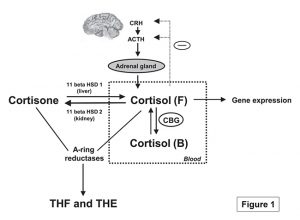 The secretion of cortisol and its regulation are shown in Figure 1 (right). Apart from its upregulation in response to stress, cortisol levels in humans follow a regular diurnal rhythm of expression, and characterization of the diurnal profile of cortisol expression is a key indicator of HPA axis dysfunction (Fries et al., 2009). One of the most important measures in assessing the diurnal rhythm of cortisol is the concentration of salivary cortisol upon awakening. The observed increase in free cortisol is routinely used in the scientific community to assess adrenocortical activity, and the correlation of the increase in cortisol level upon awakening (Cortisol Awakening Response or CAR) with chronic stress, HPA axis dysfunction, and burnout is well established (Fries et al., 2009). Elevated CAR is observed in individuals with high stress levels, e.g., unemployed individuals have higher CAR levels compared to employed individuals. It is also thought to be an important component of performance enhancement (Law et al., 2015; Thorn et al., 2006).
The secretion of cortisol and its regulation are shown in Figure 1 (right). Apart from its upregulation in response to stress, cortisol levels in humans follow a regular diurnal rhythm of expression, and characterization of the diurnal profile of cortisol expression is a key indicator of HPA axis dysfunction (Fries et al., 2009). One of the most important measures in assessing the diurnal rhythm of cortisol is the concentration of salivary cortisol upon awakening. The observed increase in free cortisol is routinely used in the scientific community to assess adrenocortical activity, and the correlation of the increase in cortisol level upon awakening (Cortisol Awakening Response or CAR) with chronic stress, HPA axis dysfunction, and burnout is well established (Fries et al., 2009). Elevated CAR is observed in individuals with high stress levels, e.g., unemployed individuals have higher CAR levels compared to employed individuals. It is also thought to be an important component of performance enhancement (Law et al., 2015; Thorn et al., 2006).
HPA axis dysfunction
Both Cushing's syndrome and Addison's disease are at the extreme ends of the spectrum of cortisol levels and are not commonly observed. However, subclinical manifestations of HPA axis dysfunction more commonly affect health and well-being. These disorders are also determined by measuring cortisol production and, more importantly, the diurnal rhythm associated with that production. Deviation from normal diurnal rhythms, including the cortisol awakening response, is associated with many diseases, both physiological and psychological, and can lead to adverse health effects over a prolonged period of time.
Studies of conditions with altered HPA axis activity rely on determining the production of free cortisol over the course of a day using the most credible methods supported by the scientific literature and focus on either multiple saliva samples or a 24-hour urine collection. However, measurement of 24-hour urine is representative of total free cortisol production over the course of a day and, while useful for determining the allostatic load experienced by individuals, is not capable of representing diurnal variations in cortisol expression. The only scientifically reproducible method for noninvasively and accurately determining the diurnal rhythm of cortisol expression is to collect three to four saliva samples throughout the day and determine the free cortisol in the saliva. Therefore, the only scientifically credible sample type currently accepted by the scientific community is saliva.
The Latent Trait Cortisol (LTC) method
In addition to empirical measurements of Cortisol Awakening Response and Diurnal Slope-Area Under the Curve (AUC), Latent Trait Cortisol can be determined using established statistical models to determine an individual's trait or stable cortisol level.

By far the most empirical saliva sampling indices in salivary biology are Cortisol Awakening Response (CAR), Diurnal Slope, and Area Under the Curve with respect to Ground (AUCg) - all of which require saliva samples to be collected over multiple days and at precise time points. Researchers constantly struggle with variability due to inconsistent sampling. Researchers therefore use statistical methods that average samples across datasets, which requires significant statistical power across participants and samples collected.
Based on these challenges, advanced statistical methods such as Latent Trait Cortisol (LTC) have been developed to account for commonalities across multiple saliva samples. A number of studies have examined the LTC model in detail. For example, Doane et al. (2015) examined the reliability, validity, and stability of LTC values over several months and reported that "variation in individual cortisol measurements attributable to corresponding LTC ranged from 20% to 65%." Doane also showed that "LTC differed from CAR, predicted components of the diurnal profile differently across the day, and was very stable across waves (months) of measurement."
LTC is not just a statistic, but a method to reduce the number of samples required (at least 3 samples per participant, Giesbrecht et al. 2015), reduce participant burden, and increase stability estimates. The result is a latent variable factor that is essentially "free" of state characteristics and measurement error, which increases accuracy beyond simply averaging values across samples. This latent variable represents a person's trait or stable cortisol level. Figure 1 (right) illustrates how using a statistical latent modeling approach allows us to find all common information between three samples or the stable trait cortisol level. This information is all collected "behind the scenes" within the statistical program and can be used in this way for all analyses.
![]() Salimetrics offers regular webinars to support both experienced and new investigators and their study teams. These webinars present published best practices for integrating salivary bioscience into research studies. The knowledge-based overview will include methods and techniques that maximize the opportunity for high-quality data and study success. In addition, the Salimetrics team will share best practices for increasing participant compliance and the scientific rationale for why certain methods provide higher quality results than others. Training on collection methods and a demonstration of the various saliva collection methods and devices will be provided.
Salimetrics offers regular webinars to support both experienced and new investigators and their study teams. These webinars present published best practices for integrating salivary bioscience into research studies. The knowledge-based overview will include methods and techniques that maximize the opportunity for high-quality data and study success. In addition, the Salimetrics team will share best practices for increasing participant compliance and the scientific rationale for why certain methods provide higher quality results than others. Training on collection methods and a demonstration of the various saliva collection methods and devices will be provided.
>> Further Information and Registration
28.07.2021
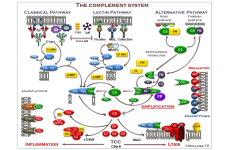
Complement System
WIESLAB® Functional Assays from Svar
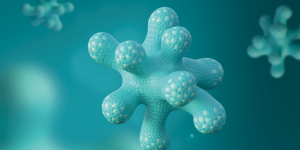
Serum-free Organoid...
Afamin/Wnt3a Complex
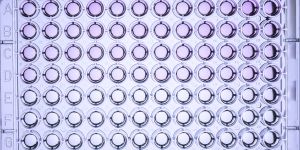
Uncoated ELISA Kits
The cost-saving choice

Microplastics
Reference Materials from LGC Standards
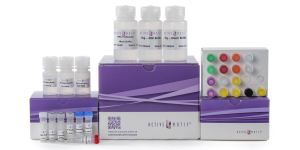
CUT&Tag-IT
Genome-wide analysis of histone marks


